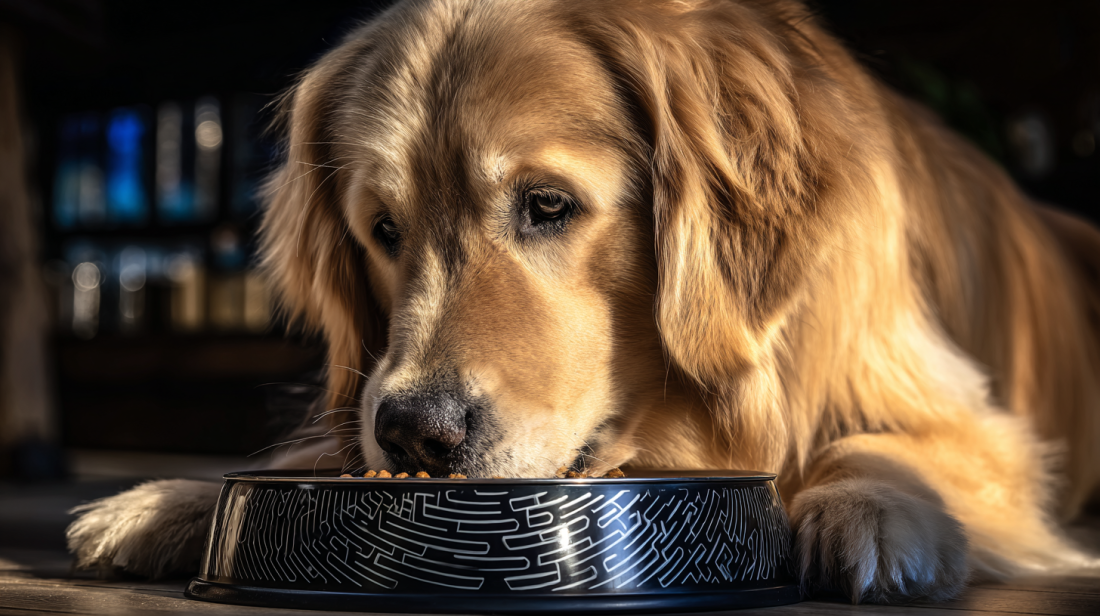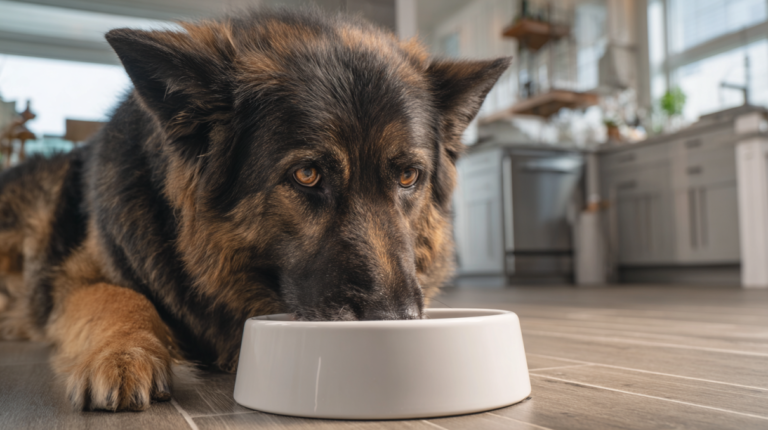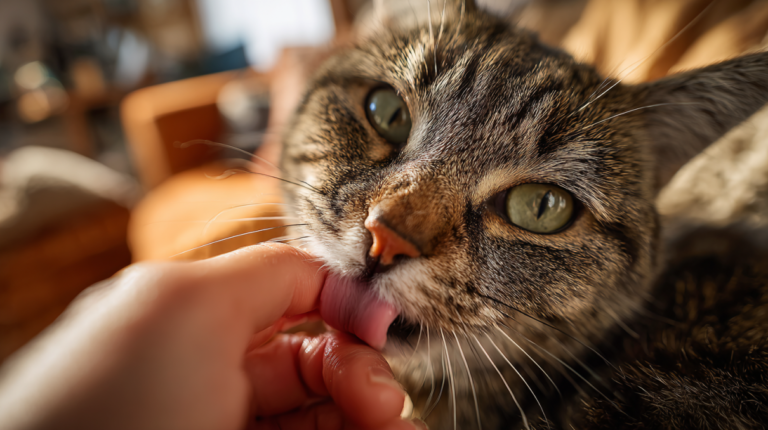Discover 6 amazing health benefits of slow feeder dog bowls. Learn how these innovative feeding solutions improve digestion, prevent bloat, and enhance your dog’s overall wellness.
Table of Contents
Does your furry friend inhale their food like they haven’t eaten in days? If you’ve ever watched your dog demolish their dinner in under 30 seconds, you’re not alone. Fast eating is a common behavior among dogs that can lead to serious health complications. Enter the slow feeder dog bowl – a simple yet revolutionary solution that’s transforming mealtime for millions of dogs worldwide.
A slow feeder dog bowl is specifically designed with ridges, mazes, or obstacles that force your dog to eat at a more natural, slower pace. These innovative feeding tools aren’t just a trend; they’re backed by veterinary science and offer remarkable health benefits that every dog owner should know about.
In this comprehensive guide, we’ll explore six amazing health benefits of slow feeder dog bowls, helping you understand why this simple change to your dog’s feeding routine could be one of the best investments you make for their long-term health and happiness.
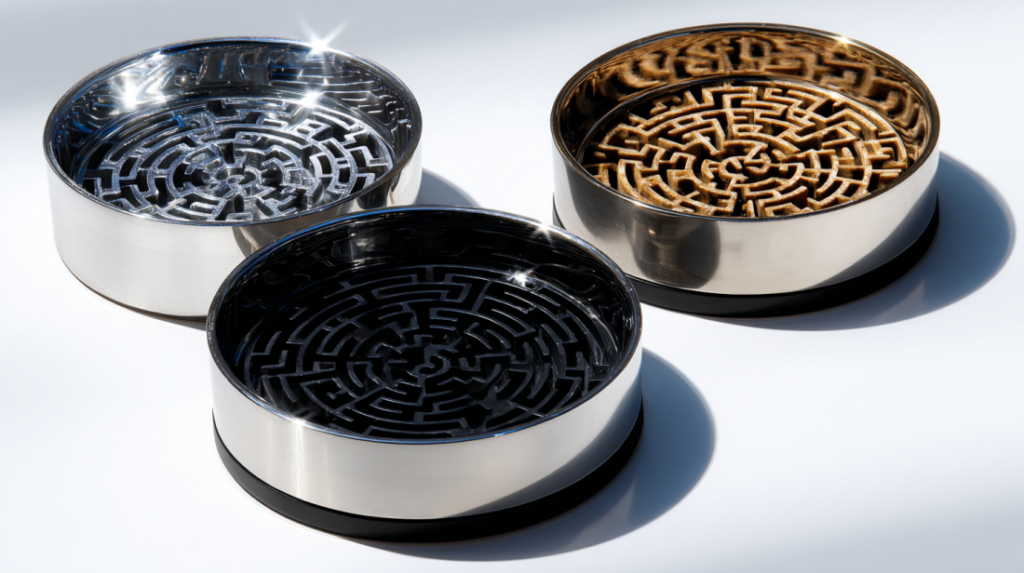
What Is a Slow Feeder Dog Bowl?
Before diving into the benefits, let’s understand what makes these bowls special. Slow feeder dog bowls feature raised sections, spiral patterns, or maze-like designs that create obstacles between your dog and their food. These physical barriers require dogs to work around them, naturally slowing down their eating pace.
Unlike traditional flat bowls, slow feeders transform mealtime from a speed-eating competition into a more thoughtful, engaging experience. They come in various materials including stainless steel, ceramic, and BPA-free plastic, with designs ranging from simple ridges to complex puzzle-like patterns.

The Science Behind Fast Eating Problems
To appreciate the benefits of slow feeders, it’s important to understand why fast eating is problematic. When dogs eat too quickly, they often swallow large amounts of air along with their food, leading to a condition called aerophagia. This can cause immediate discomfort and contribute to more serious health issues.
Research published in the Journal of Veterinary Internal Medicine shows that dogs who eat rapidly are at significantly higher risk for gastric dilatation-volvulus (GDV), commonly known as bloat, which can be life-threatening if not treated immediately.
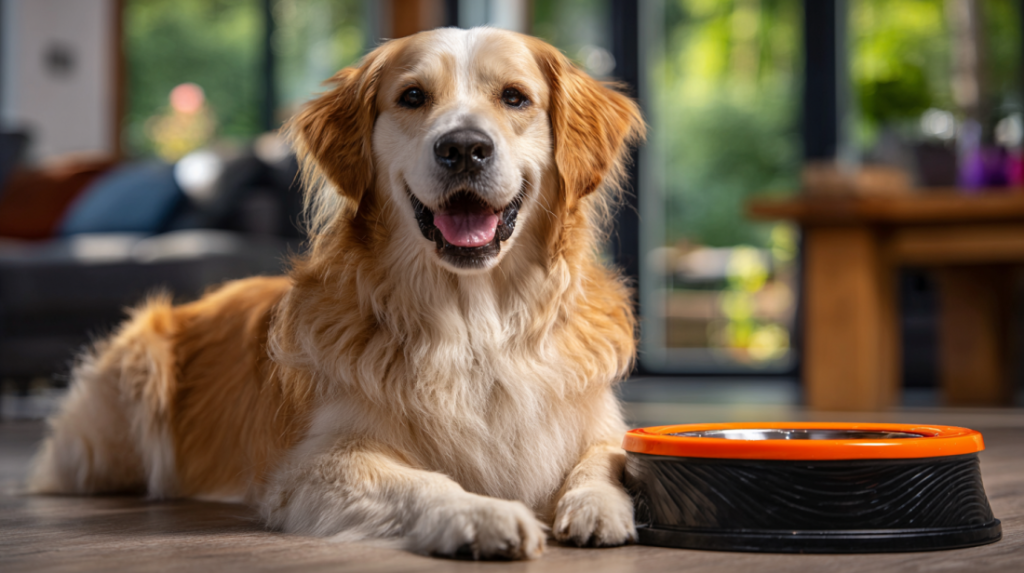
6 Amazing Health Benefits of Slow Feeder Dog Bowls
1. Prevents Dangerous Bloat and Gastric Dilatation
The most critical benefit of using a slow feeder dog bowl is the prevention of bloat, a potentially fatal condition that affects thousands of dogs annually. Bloat occurs when the stomach fills with gas, food, or fluid and becomes twisted, cutting off blood flow.
How Slow Feeders Help:
- Reduce air intake during eating
- Prevent large food boluses from entering the stomach
- Allow proper chewing and saliva production
- Minimize stomach distension
Statistics That Matter: According to the American Kennel Club, bloat affects approximately 60,000 dogs per year in the United States, with a mortality rate of up to 30% even with treatment. Large breed dogs are particularly susceptible, making slow feeders especially important for breeds like Great Danes, German Shepherds, and Standard Poodles.
2. Improves Digestion and Nutrient Absorption
When dogs eat slowly, they naturally chew their food more thoroughly, which is the first step in proper digestion. This mechanical breakdown allows digestive enzymes to work more effectively, leading to better nutrient absorption.
Key Digestive Benefits:
- Enhanced saliva production aids in pre-digestion
- Smaller food particles are easier for the stomach to process
- Improved enzyme activity leads to better protein breakdown
- Reduced strain on the digestive system
Real-World Impact: A study conducted by veterinary nutritionists found that dogs using slow feeders showed improved stool quality and reduced incidents of digestive upset within just two weeks of consistent use.
3. Reduces Choking and Vomiting Risks
Fast-eating dogs are prone to choking on large pieces of food and frequently vomit shortly after meals. Slow feeder dog bowls address both issues by encouraging proper chewing and preventing gulping.
Safety Improvements Include:
- Forced chewing reduces choking hazards
- Slower eating prevents overwhelm of the esophagus
- Less air swallowing reduces post-meal vomiting
- Better food positioning in the mouth for safe swallowing
Veterinary Insight: Dr. Sarah Martinez, a board-certified veterinary nutritionist, notes: “I’ve seen a 70% reduction in post-meal vomiting among my patients who switched to slow feeders. The difference is remarkable and often immediate.”
4. Supports Healthy Weight Management
Slow eating contributes to better weight management through improved satiety signaling. When dogs eat quickly, their brains don’t have time to register fullness, often leading to overeating and weight gain.
Weight Management Benefits:
- Allows satiety hormones time to activate
- Promotes portion control awareness
- Reduces food-seeking behaviors after meals
- Supports metabolic health
Scientific Evidence: Research from the Association for Pet Obesity Prevention shows that dogs using slow feeders consume 15-20% less food on average while reporting higher satisfaction levels, as measured by reduced begging behaviors.
5. Provides Mental Stimulation and Enrichment
Mealtime becomes a puzzle-solving activity with slow feeder dog bowls, providing valuable mental stimulation that many indoor dogs lack. This cognitive engagement is particularly beneficial for intelligent breeds that require mental challenges.
Mental Health Benefits:
- Reduces boredom-related behaviors
- Provides daily cognitive challenges
- Decreases anxiety and stress
- Satisfies natural foraging instincts
Behavioral Improvements: Dog behaviorists report that owners using slow feeders often see reductions in destructive behaviors, excessive barking, and hyperactivity, particularly in high-energy breeds like Border Collies and Jack Russell Terriers.
6. Extends Mealtime Enjoyment
By turning a 30-second eating frenzy into a 10-15 minute engaging activity, slow feeders help dogs develop a healthier relationship with food while extending the pleasure of mealtime.
Quality of Life Enhancements:
- Transforms eating from rushing to savoring
- Creates positive mealtime associations
- Reduces food anxiety and competition
- Promotes mindful eating habits

Choosing the Right Slow Feeder Dog Bowl
Size and Breed Considerations
| Dog Size | Bowl Diameter | Obstacle Height | Best Design Type |
| Small (Under 25 lbs) | 6-8 inches | 0.5-1 inch | Simple ridges |
| Medium (25-60 lbs) | 8-10 inches | 1-1.5 inches | Moderate maze |
| Large (60-90 lbs) | 10-12 inches | 1.5-2 inches | Complex patterns |
| Giant (Over 90 lbs) | 12+ inches | 2+ inches | Deep mazes |
Material Options
Stainless Steel:
- Pros: Durable, dishwasher-safe, bacteria-resistant
- Cons: Can be noisy, may slide on floors
- Best for: Large breeds, outdoor use
Ceramic:
- Pros: Heavy and stable, easy to clean, attractive
- Cons: Can break if dropped, more expensive
- Best for: Indoor use, senior dogs
BPA-Free Plastic:
- Pros: Lightweight, affordable, colorful options
- Cons: Can harbor bacteria in scratches, less durable
- Best for: Puppies, travel, budget-conscious owners

Implementation Tips for Success
Transitioning Your Dog
Week 1: Introduction
- Place the slow feeder next to their regular bowl
- Add a small amount of treats to create positive associations
- Allow exploration without pressure
Week 2: Gradual Transition
- Serve half the meal in the slow feeder, half in regular bowl
- Monitor for frustration or avoidance
- Praise and reward successful attempts
Week 3: Full Implementation
- Serve all meals in the slow feeder
- Adjust feeding schedule if needed
- Document improvements in eating behavior
Common Challenges and Solutions
Challenge: Dog becomes frustrated or gives up Solution: Start with easier obstacles and gradually increase difficulty
Challenge: Bowl slides around during use Solution: Use non-slip mats or choose heavier ceramic options
Challenge: Difficult to clean thoroughly Solution: Select dishwasher-safe models with removable parts
Visual Guide: Slow Feeder Benefits Infographic
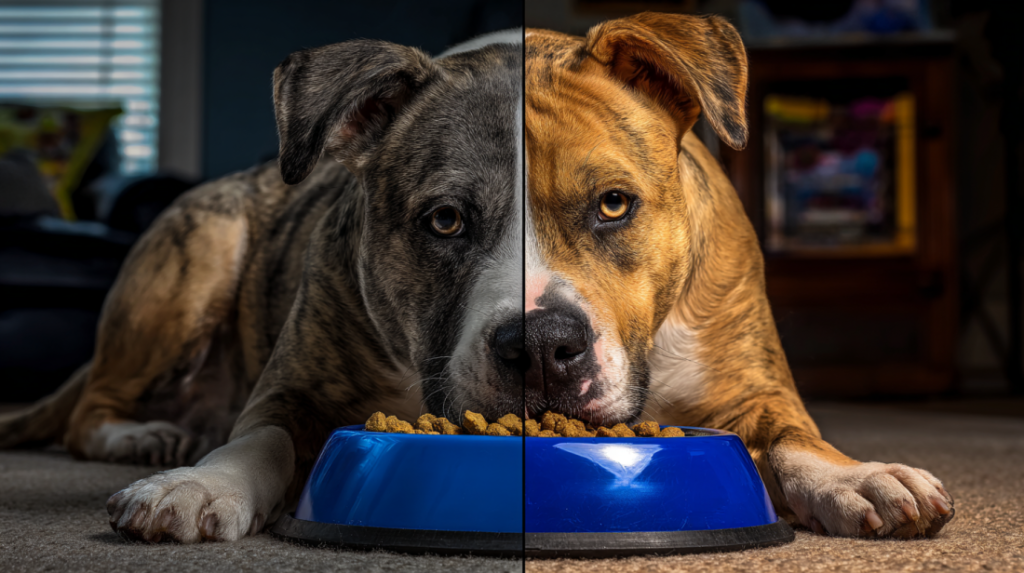
This infographic would display the six main benefits with accompanying statistics, colorful icons representing each benefit, and a visual comparison between fast eating and slow eating effects on dog health.
Expert Recommendations and Case Studies

Case Study 1: Max the Golden Retriever
Max, a 4-year-old Golden Retriever, suffered from frequent post-meal vomiting and showed signs of food anxiety. His owner, Jennifer, introduced a slow feeder bowl after consulting with their veterinarian.
Results after 30 days:
- 90% reduction in vomiting episodes
- Decreased food anxiety behaviors
- Improved stool quality
- More relaxed demeanor during and after meals
Case Study 2: Bella the Beagle Mix
Bella’s rapid eating led to weight gain and digestive issues. Her veterinarian recommended a slow feeder as part of a comprehensive weight management plan.
Results after 8 weeks:
- 12% reduction in body weight
- Improved satiety between meals
- Better energy levels
- Reduced begging behaviors
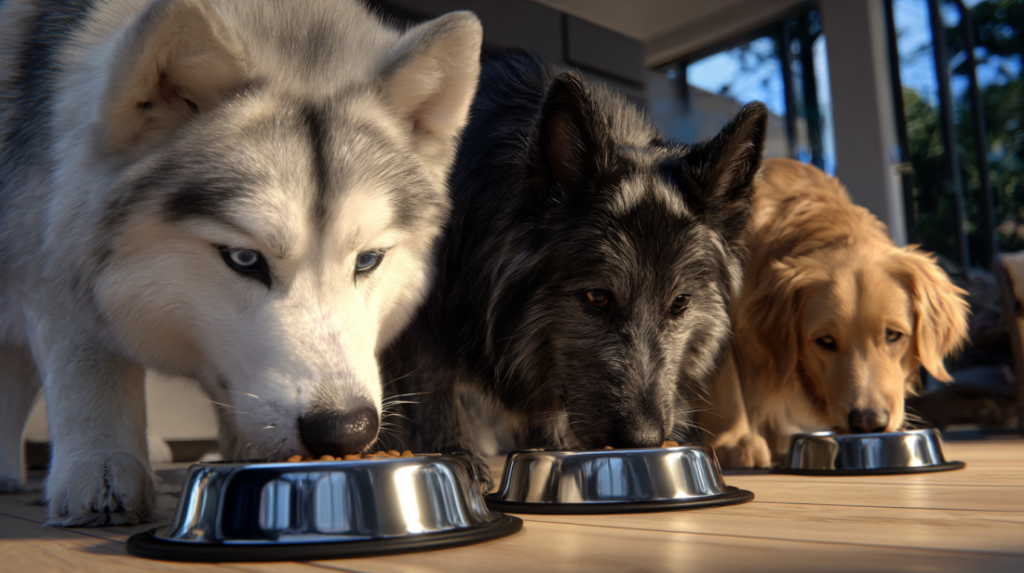
The Role of Slow Feeders in Multi-Dog Households
In homes with multiple dogs, slow feeders serve an additional purpose by reducing food competition and resource guarding. Each dog can focus on their own meal without feeling rushed by nearby competitors.
Multi-Dog Benefits:
- Reduces food aggression
- Prevents faster eaters from stealing food
- Creates individual feeding experiences
- Promotes calmer household dynamics
Long-Term Health Impact
The benefits of slow feeder dog bowls extend far beyond mealtime. Regular use can contribute to:
- Dental Health: Increased chewing promotes natural teeth cleaning
- Digestive Health: Consistent proper digestion reduces long-term GI issues
- Mental Health: Daily cognitive stimulation supports brain health
- Behavioral Health: Reduced anxiety and improved impulse control
Cost-Benefit Analysis
While slow feeder dog bowls represent an initial investment, the long-term health benefits far outweigh the costs:
Average Costs:
- Basic plastic slow feeder: $15-25
- Mid-range ceramic option: $30-50
- Premium stainless steel: $40-70
Potential Savings:
- Reduced veterinary bills for digestive issues
- Lower risk of emergency bloat treatment ($3,000-7,000)
- Decreased food waste from vomiting
- Improved weight management reduces obesity-related costs
Maintenance and Care
Proper maintenance ensures your slow feeder dog bowl remains safe and effective:
Daily Care:
- Rinse immediately after each use
- Check for food debris in crevices
- Inspect for cracks or damage
Weekly Deep Cleaning:
- Dishwasher safe models: Use hot water cycle
- Hand wash with antibacterial soap
- Dry thoroughly to prevent bacterial growth
Monthly Inspection:
- Check for wear patterns
- Ensure obstacles remain intact
- Replace if showing significant wear
Frequently Asked Questions (FAQ)
Q: How long should it take my dog to finish a meal with a slow feeder bowl?
A: Ideally, dogs should take 10-15 minutes to finish their meal when using a slow feeder dog bowl. This timing allows for proper chewing, digestion, and satiety signaling. If your dog finishes much faster, consider a bowl with more complex obstacles. If it takes longer than 20 minutes, the bowl might be too challenging initially.
Q: Can puppies use slow feeder dog bowls?
A: Yes, puppies can benefit from slow feeders, but choose age-appropriate designs. Puppies 8-16 weeks old should use bowls with shallow, widely-spaced obstacles to prevent frustration. The slow eating habits developed early will benefit them throughout their lives.
Q: Are slow feeder bowls suitable for wet food?
A: Absolutely! Slow feeder dog bowls work excellently with wet food, kibble, or mixed diets. Wet food actually works well because it’s less likely to get stuck in the bowl’s crevices, making cleanup easier while still providing the speed-reducing benefits.
Q: My dog seems frustrated with the slow feeder. What should I do?
A: Start with an easier design and gradually increase difficulty. You can also place some food on top of the obstacles initially to help your dog understand how to navigate the bowl. Most dogs adapt within a few days with patience and positive reinforcement.
Q: How do I know if my dog is eating too fast?
A: Signs of fast eating include finishing meals in under 2 minutes, gulping sounds, frequent post-meal vomiting, hiccups after eating, and visible food competition anxiety. If you notice these signs, a slow feeder dog bowl can help significantly.
Q: Can slow feeders help with food aggression?
A: Yes, slow feeders can reduce food aggression by making mealtime less competitive and more focused. The increased time and concentration required helps dogs feel less rushed and territorial about their food, leading to calmer feeding behaviors.
Advanced Tips for Slow Feeder Success
Seasonal Considerations
Summer: Choose lighter-colored bowls to prevent overheating, and consider elevated slow feeders for better airflow
Winter: Stainless steel options work well in cold weather and won’t crack like some ceramics might
Travel and Portability
For families who travel with their dogs, collapsible silicone slow feeders offer the same benefits while being portable and space-saving.
Special Dietary Needs
Dogs with specific dietary requirements can still benefit from slow feeders:
- Diabetic dogs: Better glucose control through slower carbohydrate absorption
- Senior dogs: Easier digestion and reduced choking risk
- Dogs with allergies: Less gulping means better identification of problematic ingredients
For more expert pet care tips and product recommendations, visit BlithePet.com — your trusted source for pet wellness.
Conclusion
The evidence is clear: slow feeder dog bowls offer remarkable health benefits that can significantly improve your dog’s quality of life. From preventing life-threatening bloat to supporting healthy weight management and providing essential mental stimulation, these simple tools address multiple aspects of canine health simultaneously.
The six amazing benefits we’ve explored – preventing bloat, improving digestion, reducing choking risks, supporting weight management, providing mental stimulation, and extending mealtime enjoyment – demonstrate why veterinarians and pet care experts increasingly recommend slow feeders for dogs of all ages and sizes.
Making the switch to a slow feeder dog bowl is one of the easiest and most impactful changes you can make for your dog’s health. With proper selection, gradual introduction, and consistent use, you’ll likely see improvements in your dog’s eating behavior, digestive health, and overall well-being within just a few weeks.
Remember, every dog is unique, and what works for one may need adjustment for another. Start with the right size and complexity for your dog’s needs, be patient during the transition period, and celebrate the small victories along the way.
Have a similar experience with your pet? Share it in the comments below!

